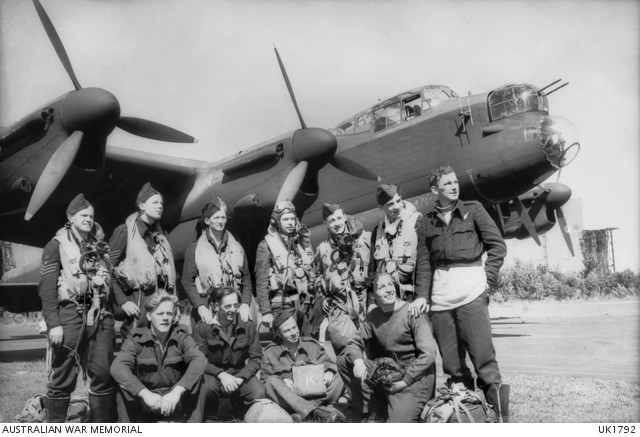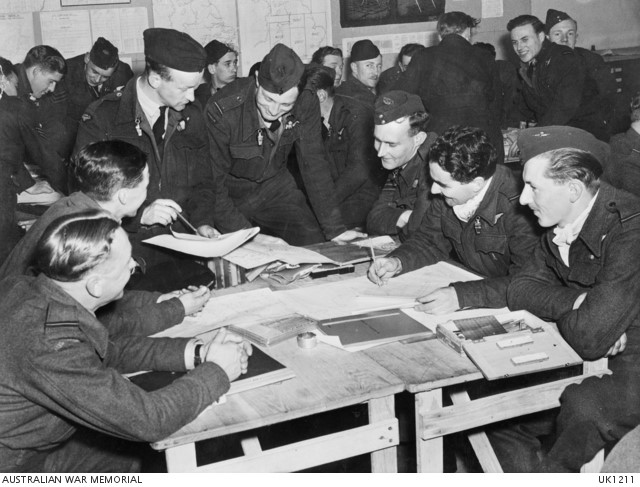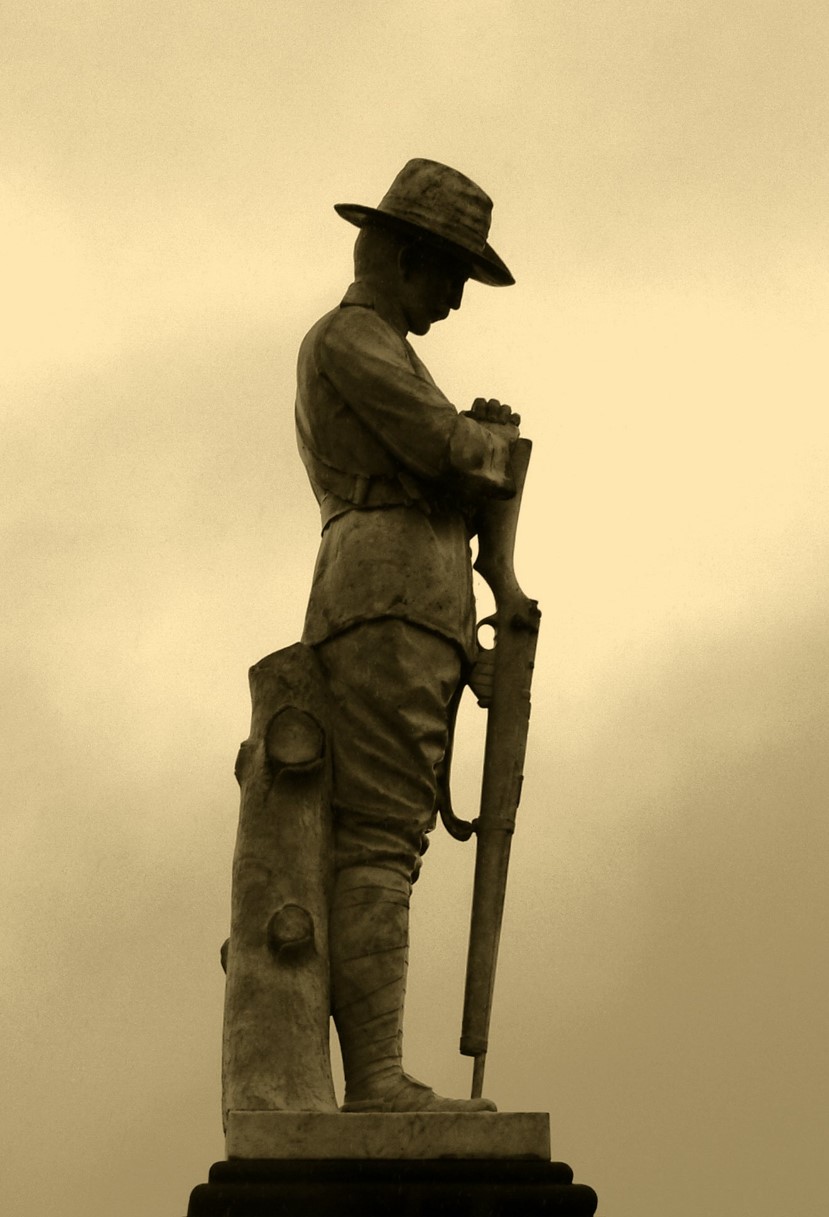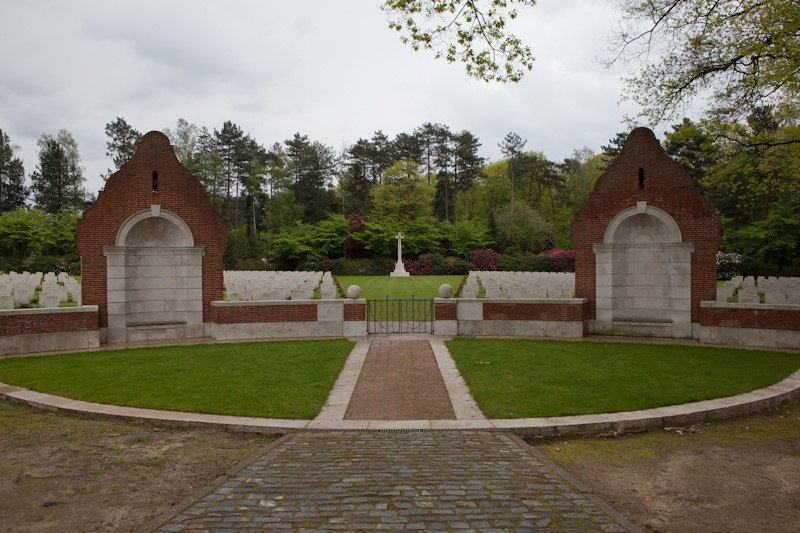Flying Officer Peter John Hammond, the son of Stanley Hammond and Marie Hammond (nee Treves), was born at Brisbane in Queensland on 12th May 1922. He was educated at the Toowoomba Grammar School. He was enrolled in the Reserve of the Royal Australian Air Force after swearing an Oath of Affirmation on 19th May 1941 and issued Badge No. 2609. At the age of 19 years and 4 months he was enlisted into the Citizen Air Force of the R.A.A.F. at No. 3 Recruiting Centre in Brisbane on 14th September 1941 after giving an undertaking that he would serve for the duration of the war and an additional twelve months. He was allotted the service number of 414400. At the time of his enlistment he was employed as a Clerk at the Stamp Duties Office, Treasury Building, Queen Street, Brisbane. His physical description at the time of enlistment was that he was 5 feet 10 inches in height and weighed 135 pounds. He had a fair complexion, blue eyes and fair hair. He stated that he was of the Church of England religion. He gave his next of kin as his father, Mr Stanley Hammond, residing at 70 Hume Street, Toowoomba. His next of kin was later changed to that of his mother, Mrs S. Hammond residing at 74 Herries Street, Toowoomba, and he also recorded Miss P. Bardsley, 769 Banning Street, Winnipeg, Manitoba, as a person to be advised in the event of his injury or death.
Flying Officer Peter Hammond joined No. 3 Initial Training School at Sandgate in Queensland on 14th September 1941 to learn the basics of Air Force life. He then joined No. 2 Elementary Flying Training School at Archerfield in Queensland on 11th December 1941. He joined No. 3 Initial Training School at Sandgate on 25th January 1942. He proceeded to No. 2 Embarkation Depot at Bradfield Park in Sydney on 28th February 1942 to prepare for overseas service on attachment to the Royal Canadian Air Force. He embarked by sea transport from Melbourne 21st March 1942 and disembarked in Canada on 18th April 1942 where he joined No. 5 Manning Depot at Lachine in Quebec. He joined No. 5 Air Observer School at Winnipeg in Manitoba on 26th April 1942. Upon completion of his training he was granted the commissioned rank of Pilot Officer on 28th August 1942. He then proceeded to No. 1 (Y) Depot at Halifax in Nova Scotia 22nd October 1942 for onward movement to England. He embarked from Canada on 23rd October 1942. He disembarked in England on 9th November 1942 and joined the Royal Air Force Recruit Reception Centre at Bournemouth on the same day.
Flying Officer Peter Hammond joined No. 14 Operational Training Unit at Royal Air Force Station Cottesmore on 12th January 1943 where training was conducted to prepare members for night bomber crews. He was promoted to the rank of Flying Officer on 28th February 1943. He joined No. 420 (City of London) Squadron, Royal Canadian Air Force at Royal Air Force Station Waddington in Lincolnshire on 20th April 1943. On 1st June 1943 he proceeded to North Africa with his squadron where they operated tropicalized Wellington aircraft in support of invasions of Sicily and Italy during the period June until October 1943. After the squadron returned to England he was posted to No. 21 Operational Training Unit at Royal Air Force Station Lossiemouth on 6th December 1943 where training was conducted for night bombing using Wellington aircraft. Flying Officer Peter Hammond joined No. 467 Squadron for operational duties on 6th May 1944. No. 467 Squadron was notionally an Australian Squadron under the command of the Royal Air Force. It became operational in early 1943 and flew operations over occupied Europe until the end of the war using Avro Lancaster heavy bombers.
Flying Officer Peter John Hammond was Navigator and member of the crew of a No. 467 Squadron Royal Australian Air Force Lancaster Bomber LL 792 that was lost as a result of enemy action at Beverloo, France on 11th/12th May 1944. The aircraft was detailed to attack an enemy target at Bourg Leopold in Belgium. The aircraft crashed at 2330 hours on 11th May 1944 two kilometers west of Beverloo and 18 kilometres north-north-west of Hasselt. The International Red Cross Committee in Geneva, receiving information from German sources, notified Royal Australian Air Force Headquarters of his death by cable on 22nd June 1944. Captured German documents revealed that his body and five other members of the crew were buried in the Airfield Cemetery at St Trond in Belgium on 15th May 1945 which meant that two members of the crew were unaccounted for. At the time of his death, Peter Hammond was 21 years of age. In 1947, his body and thirty others buried at St Trond were exhumed and concentrated in the Hever Lee Cemetery near Louvain in Belgium.

Australian War Memorial photograph UK1792
Informal group portrait of aircrew and groundstaff of No. 467 Squadron at Waddington after the squadron had returned from a daylight attack on enemy airfields in Holland.
Flying Officer Peter Hammond’s name is commemorated on Panel No. 110 at the Australian War Memorial in Canberra and locally on the Toowoomba Grammar School WW2 Honour Board.
After the war, a report submitted by Squadron Leader Clowes of No. 2 Missing Research and Enquiry Unit states:
I went to Beverloo and interviewed the Burgomaster about the crash on the night of 11th/12th May 1944 explaining to him that there were two bodies still unaccounted for. He informed me that the aircraft in question crashed about 00.20 hours on the morning of 12th May 1944. Six bodies were recovered by the Germans and taken away. Then two days later the Germans came again to the scene of the crash and in a search recovered the remains of a further two bodies which they took to a destination unknown. I next paid a visit to Monsieur Strainchamps at the Belgian Bureau de Recherches of the Ministry of the Interior and discussed this case with him. He informed me that there was a cemetery generally unknown to the public where the German authorities buried members of the Belgian Resistance shot by them, in the middle of a small pine forest situated about seven kilometres east of Bourg Leopold and containing approximately 100 graves. It so happened that he was busy exhuming this cemetery at the time and had found two Royal Ai Force bodies buried there. Arrangements were made with him to go to this cemetery on 1st March 1946 accompanied by Captain Hill of No. 55 War Graves Concentration Unit at present based at Gheel in order to re-exhume these two bodies.
Note
If the aircraft crashed at the time described by the Burgomaster in the above report, the date of death of Flying Officer Peter Hammond should be 12th May not 11th May 1944.
Toowoomba Grammar School archive records show that he enrolled as a day student on 29th January 1936 and left the School on 3rd December 1937. His parent is shown as Mrs S. Hammond, 74 Herries Street, Toowoomba. He won the Thallon Medal in 1937 for his results in the Junior examination. He was placed third in the civil service examinations.

A Lancaster Bomber crew waits for the Navigator to complete his flight plan.




